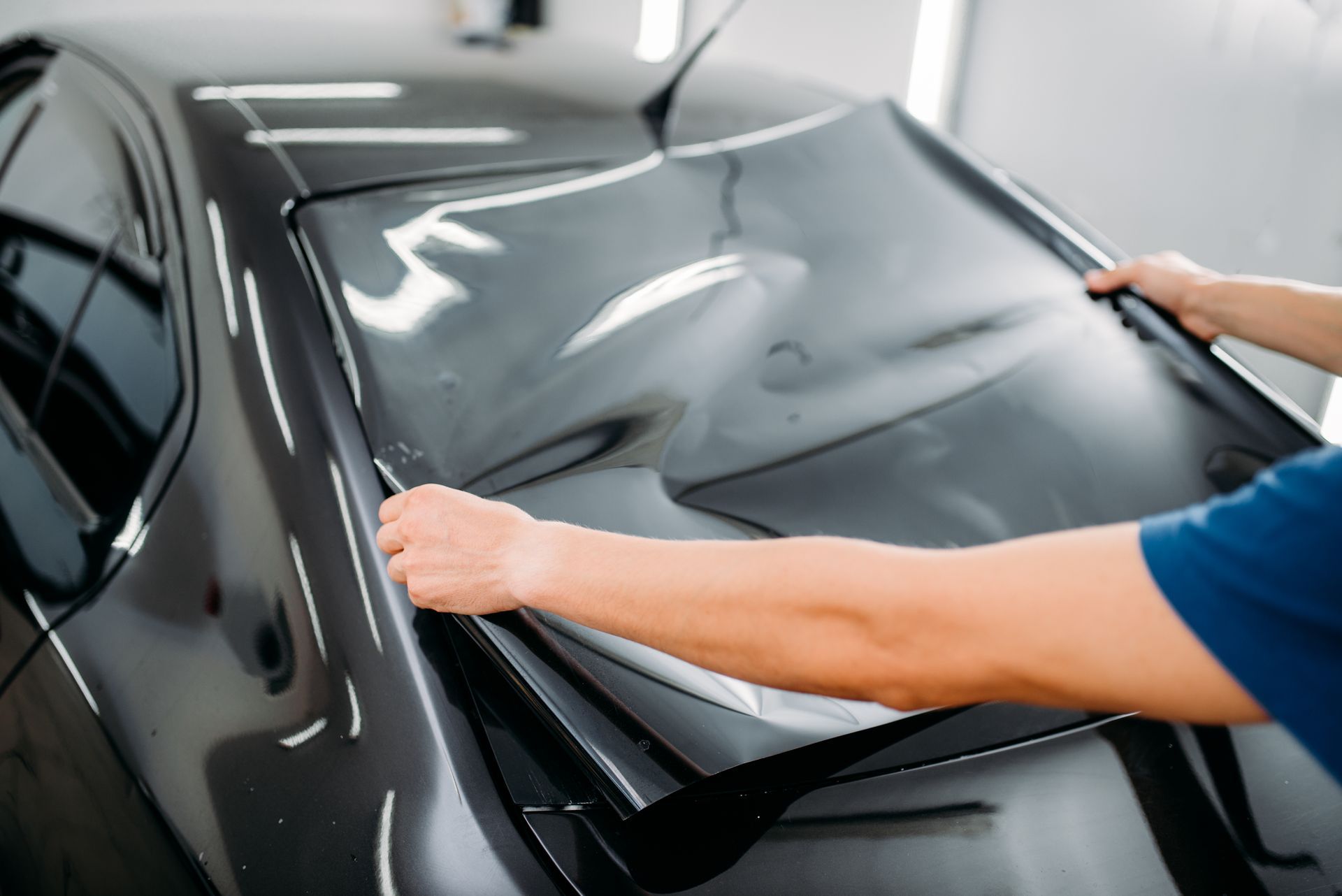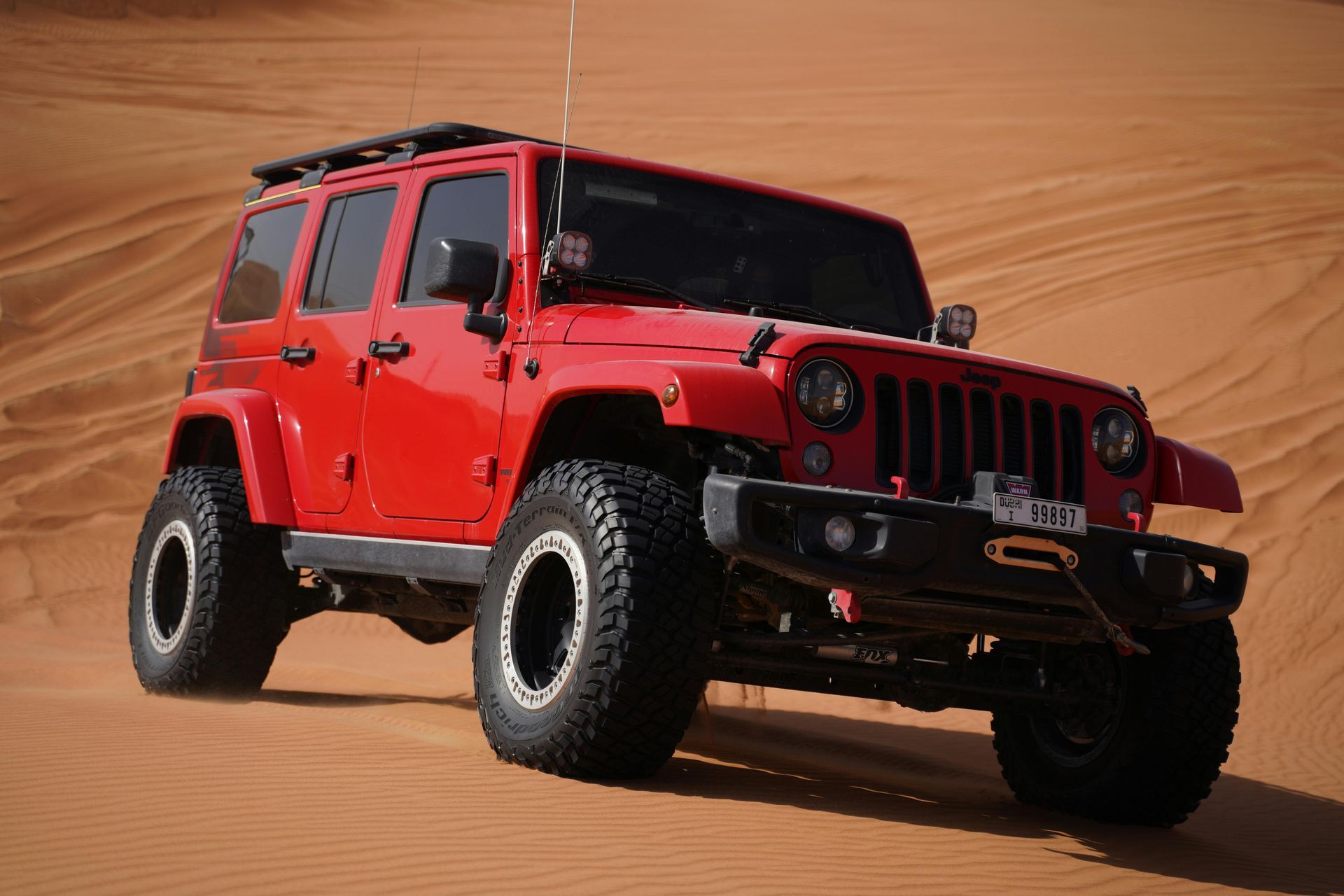Ceramic Tint vs Regular Tint: Key Differences in Window Tinting
Ceramic Tint vs Regular Tint: Complete Comparison Guide
Window tinting has evolved from a simple aesthetic upgrade to a key investment in comfort and protection. Understanding the difference between ceramic tint vs regular tint can save you money and improve your day-to-day life. As temperatures climb and UV exposure intensifies, choosing the right tint technology matters more than ever.
Standard tints rely on dyes or metallic particles to reduce light transmission at accessible price points. Meanwhile, ceramic tints represent a technological leap forward, utilizing nanoceramic particles to deliver superior heat rejection, UV protection, and
lifespan. This guide examines ceramic coatings vs window tint options, breaking down performance metrics and long-term value.
Key Takeaways
- UV Protection: Ceramic tints block up to 99% of harmful UV rays versus 50-80% for regular tints
- Heat Rejection: Ceramic reduces infrared rays by 50-80%, outperforming standard options at 30-50%.
- Longevity: Ceramic films last 10-15 years without fading, while regular tints need replacement every 2-5 years.
- Signal Clarity: Ceramic causes zero interference with GPS, phones, or radio, unlike metallic films.
- Energy Efficiency: Superior heat rejection reduces air conditioning costs and improves fuel economy.
- Visual Quality: Maintains a crystal-clear appearance without metallic shine or color distortion.
Understanding Standard Window Tinting
Standard window tinting offers affordable protection in three varieties: dyed, metallic, and carbon films, each with distinct trade-offs.
Dyed films absorb light through colored layers, effectively darkening windows with modest heat reduction. However, constant sun exposure causes fading and purple discoloration within 2-3 years.
Metallic tints incorporate reflective particles that bounce sunlight away, improving glare reduction and heat rejection. The metal content interferes with electronic signals—creating dropped calls, GPS inaccuracies, and radio static.
Carbon tints use carbon particles for improved heat blocking without metal interference, outperforming dyed films but falling short of ceramic options.
Standard tints typically block 50-80% of UV rays and reject 30-50% of infrared radiation. Most installations last 2-5 years before showing signs of degradation, with metallic varieties potentially disrupting wireless communications. The cost ranges from $200-$600 for most vehicles, making them an accessible entry point for window protection.
Legal limits vary by state, with most states capping front side windows at 35% visible light transmission while allowing darker shades on rear windows.
Exploring Ceramic Window Tinting Technology
Ceramic window tinting leverages nanotechnology to deliver performance that standard films cannot match. Unlike traditional options, ceramic films embed non-metallic, non-conductive ceramic particles into high-grade polyester.
These microscopic particles scatter and reflect infrared radiation while allowing visible light through with excellent clarity. Leading manufacturers like 3M, Llumar, and SunTek engineer ceramic lines to block up to 99% of UV rays while maintaining natural visibility.
Ceramic tint stands out for several reasons. The nano-ceramic particles reject heat before it penetrates your space rather than absorbing it, providing advanced heat control at the source. Because the composition is non-metallic, you'll experience zero interference with smartphones, GPS, or any wireless technology. The medical-grade UV protection prevents dashboard cracking, leather fading, and upholstery deterioration. Unlike dyed films that fade over time, inert ceramic particles maintain their consistent appearance for over a decade. The superior light management also reduces eye strain during dawn and dusk driving without compromising your nighttime visibility.
Available shades range from light 70% to dark 5%, accommodating legal requirements and personal preferences. Professional installation is essential to prevent bubbles and ensure proper adhesion. Once installed, ceramic tint resists peeling from car washes, weather extremes, and temperature fluctuations.
Heat Rejection Performance
Heat management is the most significant differentiator when comparing ceramic tint with standard tint.
Regular tints absorb infrared rays, converting them into surface heat that radiates inward. On a 90 °F day, standard-tinted glass can reach 120 °F or higher, with interior temperatures climbing 10-15 degrees above ambient.
Ceramic tints deflect 50-80% of infrared radiation before it converts to heat. Independent testing shows ceramic films maintain interior temperatures 20-25 degrees cooler than standard equivalents.
Practical Example: A black leather sedan parked at 95 °F with standard tint might reach 125 °F interior temperature within an hour. The same vehicle with ceramic tint typically stays below 105 °F.
Does ceramic tint block heat more effectively? Absolutely. This translates to reduced air conditioning demand, improved fuel economy (up to 15% in extreme heat), and enhanced comfort. Even light ceramic tints outperform the darkest standard films in infrared blocking.
Durability and Lifespan Comparison
When evaluating how long does ceramic window tint last versus regular options, the difference becomes a defining factor in value.
Standard tints degrade through the breakdown of dye molecules by UV radiation, infiltration of humidity into adhesive layers, and metallic corrosion. Carbon tints last 5-7 years but lose efficiency as particles oxidize.
Ceramic tints resist deterioration through chemically inert particles that ignore environmental stressors. Quality ceramic films deliver 10-15 years of peak performance, with many installations exceeding 20 years. The film maintains original color, clarity, and heat rejection throughout—no fading, no bubbling, no effectiveness loss.
To maximize your tint's lifespan, stick with ammonia-free cleaners and soft microfiber cloths for cleaning. Avoid scraping ice or using abrasive tools on tinted surfaces, as these can damage the film. Annual inspections help catch edge lifting or adhesive issues before they worsen, and parking in shade when possible reduces UV exposure intensity.
For fleet operators and commercial installations, ceramic's extended lifespan significantly reduces replacement cycles and labor costs.
Visual Appearance and Functionality
Does ceramic tint look different from regular tint? The distinctions are subtle but notable.
Regular metallic tints produce a reflective sheen that can distort views and create glare from oncoming headlights. Dyed films offer softer appearance but develop uneven coloring as they age.
Ceramic films deliver neutral, clear views without exterior shine. The absence of metallic content means no reflective distortion, maintaining sharp visibility from all angles. Night vision remains excellent without haze.
In the ceramic tint vs metallic tint comparison, ceramic eliminates signal interference entirely, which is critical for modern vehicles with connected technologies. Both types accommodate various darkness levels, but ceramic's fade resistance ensures your vehicle maintains its intended appearance indefinitely.
Cost Analysis and Value Proposition
Understanding the cost of ceramic window tint requires looking beyond initial prices to total ownership expenses.
Standard tinting ranges $200-$400 for sedans, with larger vehicles pushing toward $600. Ceramic installations start around $400-$500 for compact vehicles, reaching $800-$1,000 for SUVs or full-coverage packages.
| Aspect | Regular Tint | Ceramic Tint |
|---|---|---|
| Upfront cost (Sedan) | $200-$400 | $400-$800 |
| Expected lifespan | 2-5 years | 10-15 years |
| Infrared rejection | 30-50% | 50-80% |
| UV protection | 50-80% | 99% |
| Signal interference | Possible | None |
| Annual energy savings | Minimal | $50-$200+ |
Is ceramic tint worth it? For most users, yes. A ceramic installation lasting 12 years costs less annually than replacing standard tint three times. Factor in reduced air conditioning costs (10-15% savings), preserved interior condition (avoiding $1,000+ in sun damage), and improved resale value—ceramic proves economical within 3-4 years.
Budget-conscious buyers with short-term ownership might choose standard options. However, anyone keeping their vehicle beyond five years or living in sunny climates typically finds ceramic's benefits justify the premium.
Making Your Decision
Your decision should account for several personal factors. If you live in an area with extreme heat, ceramic's advantages become even more pronounced. Daily drivers and those with long commutes will notice the comfort difference most. The longer you plan to keep your vehicle, the more ceramic's durability pays off. Modern vehicles packed with connected features need interference-free operation, which ceramic provides. Finally, consider whether you can manage the higher upfront costs in exchange for long-term savings.
Request samples from reputable installers to experience the difference firsthand. Verify proper licensing and warranty coverage—quality installation matters as much as film choice.
Frequently Asked Questions
What is the main difference between ceramic tint and regular tint?
Ceramic tint uses non-metallic nano-ceramic particles that reject infrared heat and UV radiation through reflection rather than absorption. Regular tint relies on dyes or metallic particles that degrade faster and manage heat less effectively, giving ceramic superior longevity, clarity, and performance.
Does ceramic tint block heat better than standard options?
Yes, ceramic blocks 50-80% of infrared radiation compared to 30-50% for standard films, maintaining interior temperatures 15-25 degrees cooler under direct sunlight. The difference becomes most noticeable during summer months and in vehicles with large glass surfaces.
How long does ceramic window tint last?
Quality ceramic tint lasts 10-15 years with proper maintenance, with many installations exceeding 20 years. Standard tints fade, bubble, or peel within 2-5 years. This extended lifespan makes ceramic more cost-effective despite higher initial investment.
Is ceramic tint worth the extra cost?
For most applications, yes—ceramic pays for itself through extended lifespan, energy savings, and superior protection. The upfront premium becomes economical within 3-4 years when accounting for replacement costs and cooling efficiency. Budget-conscious buyers with short ownership timelines might reasonably opt for standard films.
Does ceramic tint look different from regular tint?
Ceramic provides clearer, more neutral appearance without reflective metallic shine or color distortion. Views remain sharp with minimal haze, and the film maintains its original appearance indefinitely without fading or purpling common in dyed films.
Final Thoughts
The ceramic tint vs regular tint decision reflects your priorities regarding performance, longevity, and investment value. Ceramic technology delivers measurable advantages in heat rejection, UV protection, durability, and visual clarity that compound over years of ownership. While standard tints serve budget-conscious buyers seeking basic protection, ceramic represents the optimal choice for anyone valuing long-term comfort, interior preservation, and energy efficiency.
Still trying to decide between ceramic and standard tint? Schedule a consultation with us!
Reference:
https://www.usatoday.com/story/cars/maintenance/2025/09/19/is-window-tinting-legal/86246976007/



